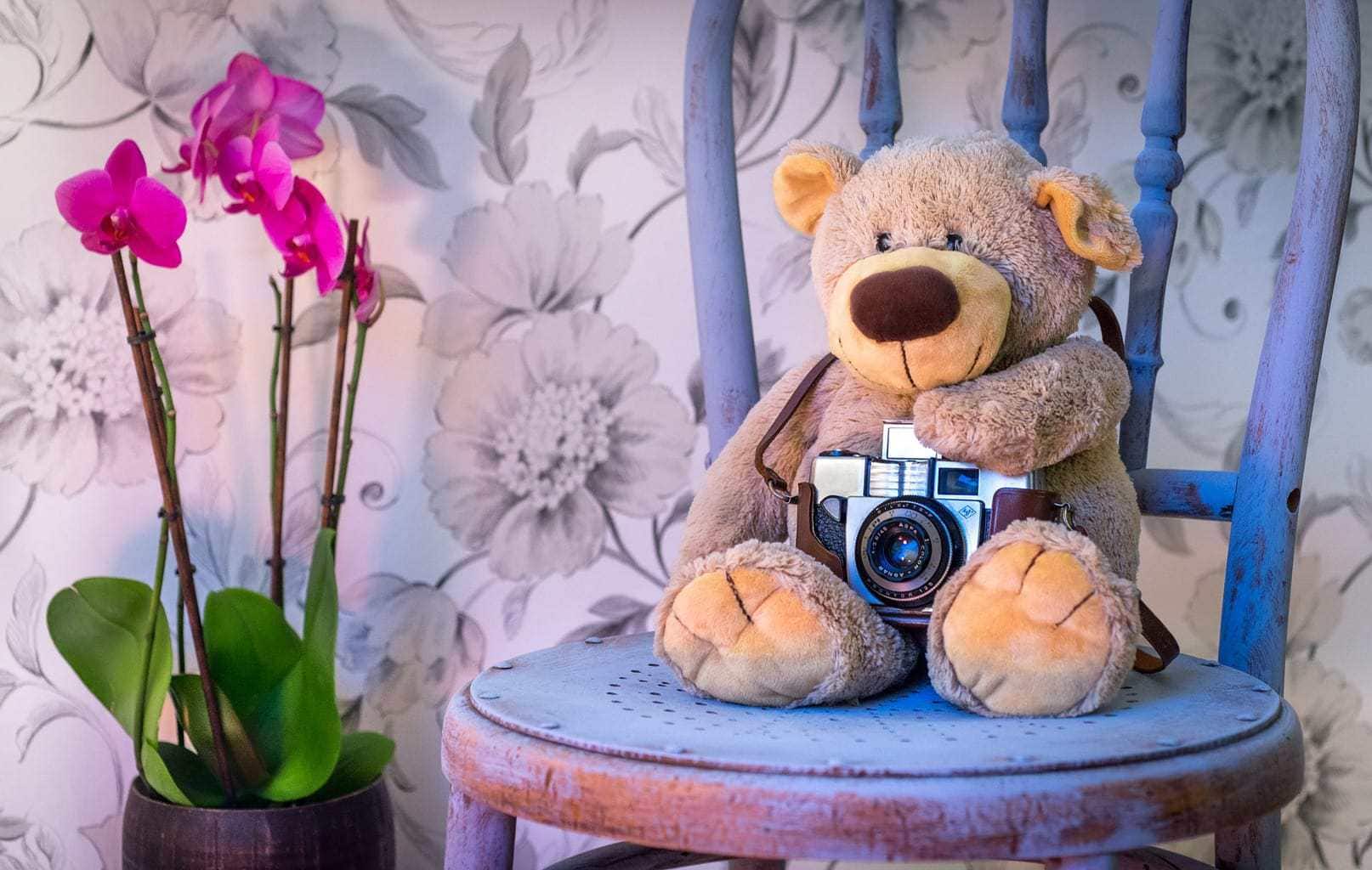I always say that a photographer is one (or one) who, among other things, has the ability to see what others do not see . To see a great photograph where others see a wall with a shadow, to see the potential of some lines that escape towards the horizon, to chase mirrors, to throw yourself on the ground, to climb on benches or to get excited when finding a good natural frame for your photos.
That capacity is 50% of what a photographer needs to take good pictures, plus a lot of motivation , a lot of practice , a camera and some technique . And guess who has that innate ability to observe, to surprise, to marvel at the world. Exact. Boys and girls should be the envy of any photographer who thinks of it.
In fact, if I had a magic lamp to make a wish on, without a doubt, I would ask for my girlish eyes to be restored to fascinate me with the world around me to the level that only boys and girls are capable of ;-). But since I don't have it, I'm content to let myself be inspired by their way of seeing the world (which is not little) and to try to teach them to capture it in the best possible way in the form of photographs. Do we see some notes to share with them?
TEACH THEM TO TAKE CARE OF PHOTOGRAPHIC EQUIPMENT
Being responsible with what they are lucky enough to have and valuing the material with which they work is the first step that we must teach children. The importance of not getting wet, not receiving blows, or of keeping the equipment clean and in good condition, as well as not being forgotten anywhere, is the basis of confidence to be able to work with the most important object you need any photographer; the camera ?
TEACH THEM THE BASIC FUNCTIONS OF THE CAMERA
They may start with a compact with different functions (automatic, macro, landscape...) In that case, explain to them what each of these automatic functions mean so that they can choose based on what they intend to portray. Obviously, the degree of depth of the explanation will not be the same for a three-year-old child as it is for a 10-year-old child.
Advice : A child is a child, that is, no matter how responsible they are, it is more than likely that the camera suffers some mishap or other, so no matter how excited you are and no matter how big a budget you have, it is better to start with a simple camera , that weighs little , and that allows them to focus on photography , than giving them the best SLR camera on the market, from which they will not know how to make the most of its potential and will end up being cumbersome when carrying it.
Here the best cameras for children with recommendations and purchase advice .
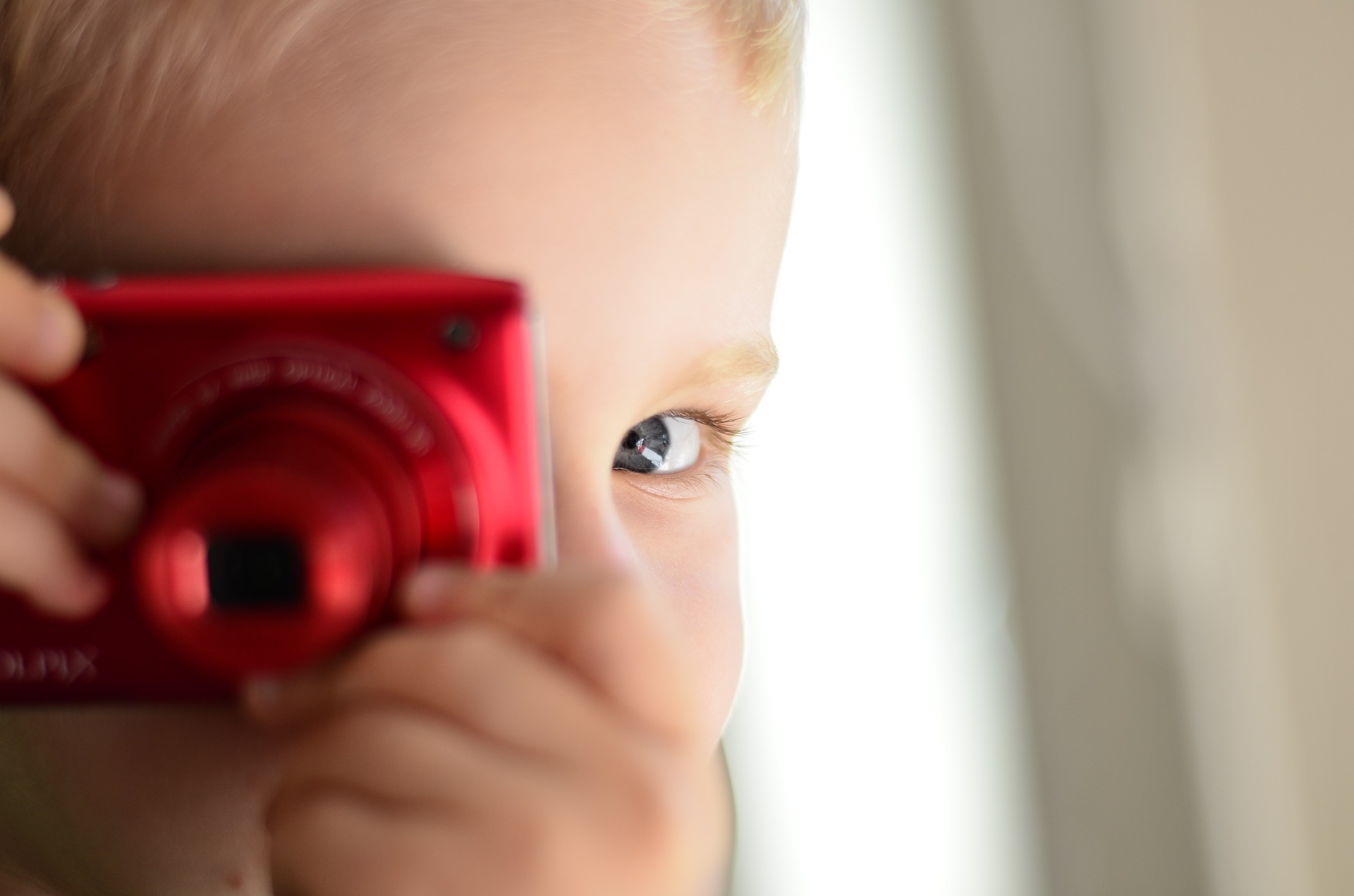
HOLD THE CAMERA CORRECTLY
We have already talked in the blog about the importance of holding the camera properly to avoid shake. Adapted to a child (and the occasional adult with a Smartphone as well) will avoid:
- Little fingers in the middle of the frame (a classic not only for children ? )
- drop the camera
- trepidations
Advice : The vertical format also exists ;-), make it known to him, offer him to use it when he sees a dominant of vertical lines (for example buildings, lampposts, etc.). Also teach him to hold the camera well for this format.
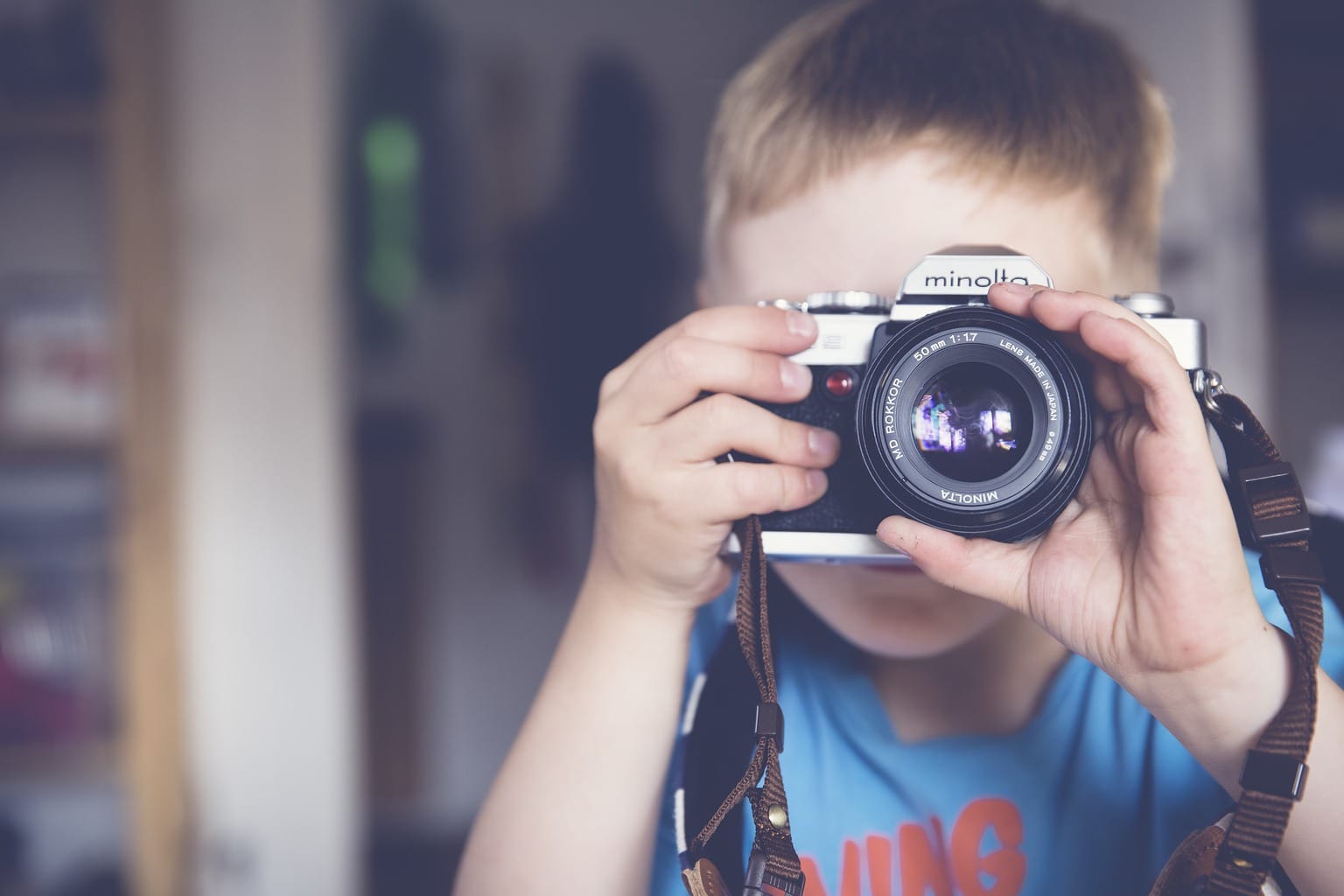
COMPOSITION FOR CHILDREN
I am not very much in favor of intervening too much in the creative process of a child, since they have all the originality that innocence, intuition, and a whole life give them outside of the corseted clichés that adults drink constantly and that they both inspire and stifle our creativity.
However, we can teach them some "rules" or basic composition tips that they can take into account when taking their photos.
THE LINES
That the lines fall due to carelessness, is an easy error to solve and at the same time that gives great results. Teach them the importance of keeping the horizon or horizontal lines very straight, as well as the vertical ones .
THE CENTER (OF THE IMAGE)
Although it is not prohibited to center the image, at the beginning we have a tendency to put all the protagonists of our images in the center of it. Trying to move the protagonist from the center of the image to one of the sides from time to time (rule of thirds for adults), can be a good exercise for them to train their composition.
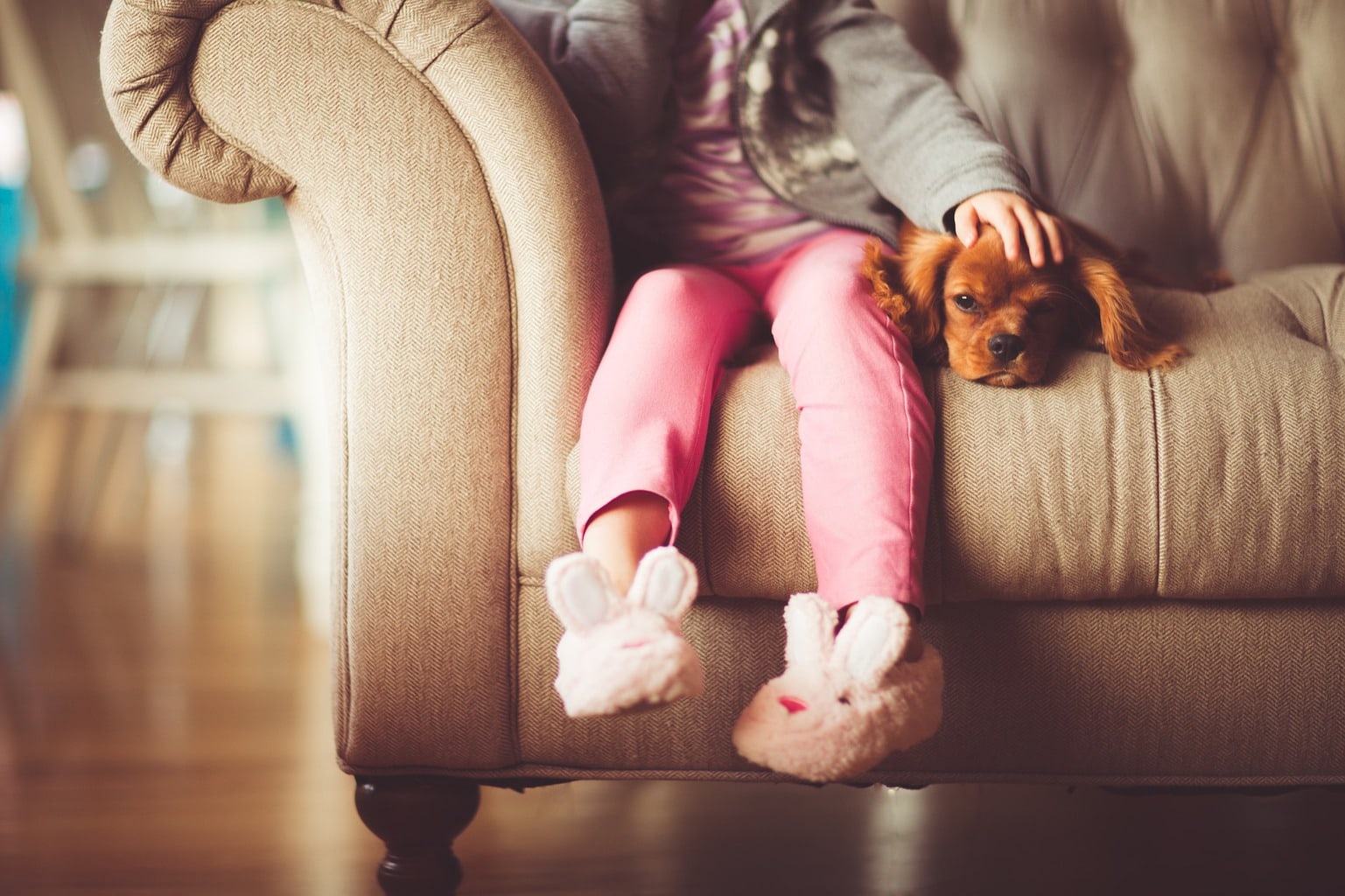
THE CENTER (OF INTEREST)
Teaching them to identify the center of interest, that is, which is the protagonist of their image, will help them to frame it better and become aware of it (try not to cut it, keep it in focus, get closer to it, etc.).
Advice : A good way to make them aware of this protagonist is to encourage them to put titles to the images they are taking, so they will pay more attention to what they wanted to photograph, they will analyze the image and, what is most important, It will help them in the future to practice captioning their photos and to be aware of the importance of doing so (isn't that something that crosses your mind from time to time? ? ).
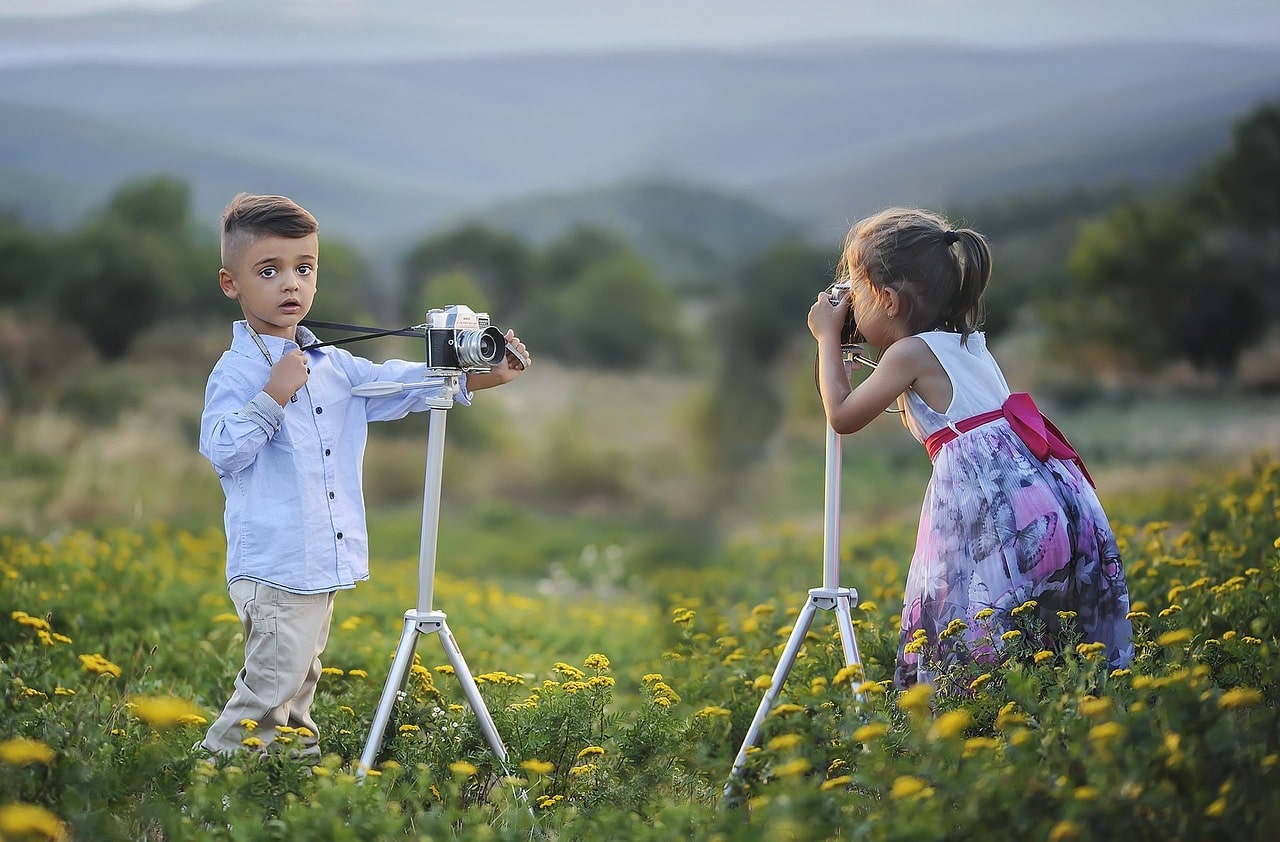
THE IMPORTANCE OF POINT OF VIEW
Children already have a completely different point of view than an adult. They are shorter, so they are closer to the ground (with the addition that they spend the day lying on the ground ? ) and they are also used to seeing the world from below. His "normal" point of view is always a few centimeters below that of an adult, and his imagination is limitless. Take advantage of their desire to move, to jump, to throw themselves on the ground so that they work on the different points of view and analyze the results:
- At ground level: What can we photograph if we stretch out on the ground?
- From bottom to top : This is usually the way in which a child experiences the adult world, and the most representative, therefore, of his way of observing the world in general.
- Normal : teach them to get up to "normal" or face to face with the elements they want to photograph. Do you have a pet? A little brother or sister? Well, we crouched down at their eye level. Do they have older siblings? An Argentine bulldog? Do they want to photograph mom and dad? So we get on some high (and safe) place to do it.
- From top to bottom : No matter how small they are, there is always something smaller to be able to photograph from above ?
TOPICS
There are so many things to photograph for someone who finds the world so fascinating, that sometimes it is necessary to give them something to focus their creativity on.
One way to do this is to offer them various topics to focus their attention on. You can, for example, motivate them through challenges or games in which they have to focus on various aspects:
- textures
- Colors in different settings (make several series of different colors)
- Objects that you have to find, for example, on the street (a tree, an animal, a person's face...)
- self portraits
- Your favorite doll in different environments
This way you will teach them to persevere and have patience , essential ingredients for any small or large photographer ?
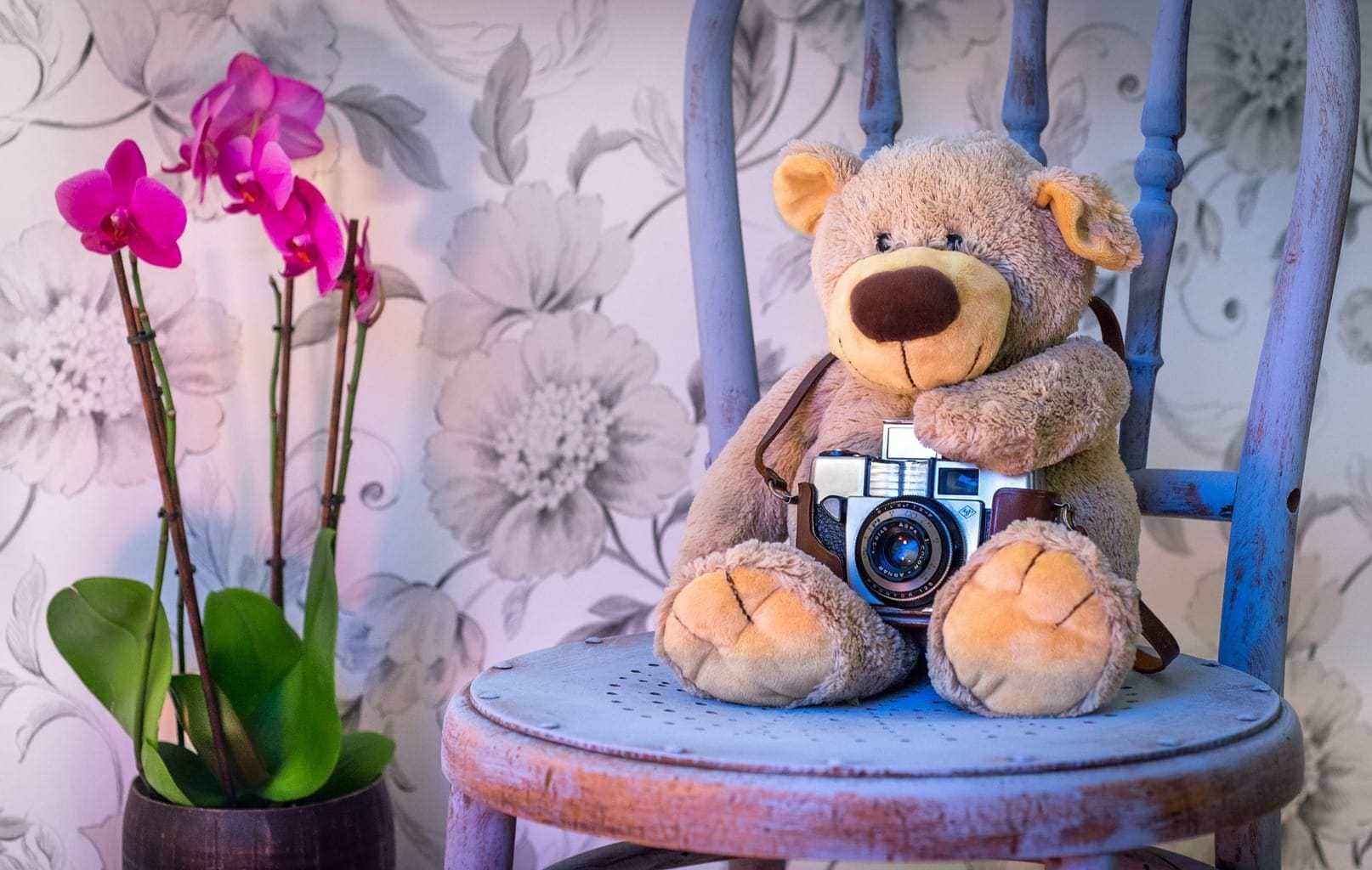
EDITION
Although we have edited images all our lives (yes, in the days of reels we did it too), it is true that editing today is the order of the day and forms, more and more, part of the hallmark of each of We. In this article you have 20 free editing programs online for you to practice with your children, although I recommend that you start with PicMonkey, very intuitive and complete.
- Show him the difference that increasing or decreasing the exposure makes in an image
- Same for color saturation.
- What happens if we increase or decrease the contrast?
- Let him play with the different filters
- Or add letters, stickers, etc., let them be children ?
CRAFTS
I don't know of a boy or girl who doesn't love cutting, gluing, painting and daubing in general. So I can think of few better ways to cap off the creative process than to print your favorite photos and come up with some craft with them:
- handmade photo albums
- Photo frames
- Collage
- puzzles
- Mobile
- garlands
Here are a few more ideas.
REMEMBER IT'S JUST A GAME ?
The creativity that a child has is a treasure that all adults with a moderately artistic soul dream of, and creativity is, above all, free , so my main advice is to teach them without making them stop being themselves, without that they lose innocence, intuition and that special way of seeing the world that characterizes them. Childhood is a game, they learn by playing, and photography should never be more or less than that ?
Oh, and one last bit of advice: Don't teach them everything at once or they will find it a monumental drag . Go giving them directions little by little, turn it into a game, and they will surely fall in love quickly, especially if they see their mother, father, grandfather, grandmother, uncle or aunt, whoever you are reading this article, all day camera in hand. At that moment his curiosity and interest in photography began. That they don't lose them only depends on how much they get to enjoy it ?
I hope this article has been useful to you but, above all, I hope it will be useful to create a new generation of boys and girls who are passionate about photography ?, who know how to see the beauty and magic of the images that surround them and that they themselves They are able to create. I would appreciate a recommendation on Twitter, Facebook or Google+ so that this article reaches as many people as possible. Thank you and see you next time.

